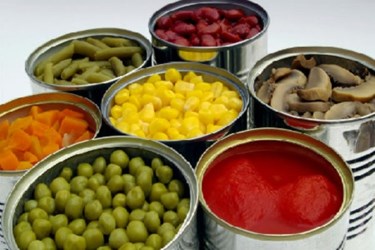How Cans Might Help The Global Food Waste Issue
By Isaac Fletcher, contributing writer, Food Online

Food waste is a real problem around the globe, and with such large quantities of food being needlessly wasted, it is important to examine ways which food packaging can help tackle the problem.
There is no better time than Earth Day to consider some of the current, major, environmental hurdles we face as a global population. One such issue is the staggering amount of food that is currently going to waste — 1.3 billion tons per year, or 350 pounds per person on Earth, according to the United Nations’ Food and Agriculture Organization (FAO). Unlike many of the issues that tax the environment, food waste is one problem that the food industry can play a very active role in alleviating.
One such method for approaching the food waste problem is to make more and better use of metal packaging. Research indicates that metal packaging formats are some of the most-effective ways to reduce the levels of food waste worldwide. Cans offer preservation and extended shelf life for food products within them, thereby reducing the rate of spoilage before consumption. As opposed to some other packaging types, cans provide a hermetically sealed environment, which protects food from light, oxygen, humidity, and pathogens.
As an added benefit, cans are incredibly sustainable and energy efficient having 100 percent recyclability and no degradation in quality. In other words, metal packaging can be recycled again and again over an indefinite period of time.
Additional facts about food waste and canned packaging:
- Studies estimate that roughly 50 percent of food produced globally is wasted each year
- The amount of food wasted in different regions depend on the state of the region’s economy
- Emerging economies waste 40 percent of food during the first two steps of the value chain — production and handling, and storage — due to improper harvesting techniques, inadequate storage conditions, and insufficient transportation
- Mature economies waste 40 percent of food during the last two steps of the value chain — distribution and consumption — due to consumers buying and cooking more than needed and retailers discarding good food
- As mentioned, cans preserve their food and establish an environment that promotes longer shelf life
- Canned goods require no refrigeration, offering an added degree of energy efficiency
- Cans have an unprecedented safety record when compared to other packaging formats
- There are over 1,500 types of goods that can be packaged and preserved using cans
